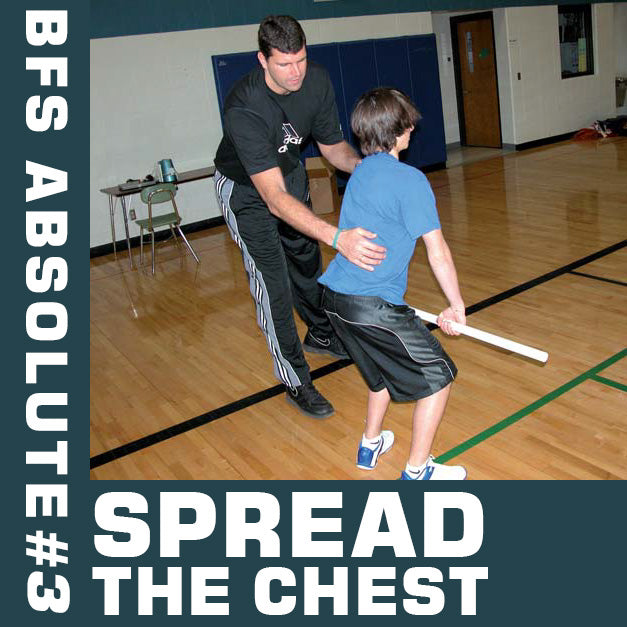BFS Absolute #3 - Lock in the Lower Back

A key teaching cue to help protect the lower back
The strength training community tends to jump on new trends, thus changing the way athletes are trained as well as how a particular coach is perceived in terms of identity and reputation. In the ’70s, static stretching and energy system training was often emphasized in athletic training, and these were soon followed by plyometrics, over speed, and form running work, stability training and functional training. One extremely popular trend of recent years, “core” training, has crossed over from fitness and rehabilitation to the sports community. Core training refers to working the muscles of the trunk, especially the abdominals and lower
back. Isolation movements are often used, such as crunches and back extensions, or compound movements such as work performed on rocker boards.
The proponents of core training contend that movements often begin from the trunk, and that power from the legs and arms must be transferred through the core. As such, these core muscles work not only as force producers but also as force transducers. This notion has led to an excessive amount of attention paid to training these muscles. Numerous books, videos, and seminars on core training are available, and the topic is included in many personal training certification programs. Whether or not this type of specialized training is worth the investment in time that many coaches give it, there is no question that these muscles are important for maximal performance. However, equally important as strength training for the core muscles is the proper posture of the trunk.
And this key idea is the inspiration of Absolute #3:
Spread the Chest.
Controlling the Core
One of the most misunderstood concepts in athletic training is that of the pelvic tilt. There are several movements the pelvis is capable of, including the twisting and lateral shifting that occurs during walking and running. But the two types of pelvic tilt that a coach should be especially concerned about in the weight room are anterior and posterior. An anterior pelvic tilt involves rotating the pelvis forward. Some of the muscles that cause an anterior pelvic tilt are the erector spinae, which are two large cable-like muscles that run along both sides of the spine, and hip flexor muscles such as the psoas. A slight anterior pelvic tilt should be used when lifting weights off the floor, such as during a deadlift or a power clean. It is also the type of posture to use when stretching the hamstrings. At BFS, we refer to an anterior pelvic tilt as “locking in” the lower back.
A posterior pelvic tilt occurs when the pelvis is rotated backward. Some of the muscles that cause a posterior pelvic tilt are the glutes, hamstrings and also the lower portion of the abdominal muscle called the rectus abdominus, which extends from the bottom of the ribs to the top of the pelvic bone. A slight posterior pelvic tilt is used when lifting weights overhead and when stretching muscles such as the psoas, which helps lift the legs.
Download the Free 6 Absolutes Book
The important concept to consider here is that it’s not that one type of pelvic tilt is better than another, but that one type of pelvic tilt is better suited for a specific purpose. For example, during a clean and jerk, an anterior pelvic tilt should be used when the barbell is pulled from the floor; but when the barbell is on the shoulders prior to the jerk, more of a posterior pelvic tilt should be used. This combination of pelvic tilts provides the highest levels of stabilization for the spine – and this transition from one pelvic tilt to another is called the lumbar pelvic rhythm.
One of the most serious errors in the weight room occurs when the lower back is rounded (posterior pelvic tilt) when a barbell is lifted off the floor or when squatting. When the back is rounded, the erector spinae muscles are relaxed, and as such the discs of the lower back and their ligaments are exposed to high levels of dangerous forces. Using the verbal cue “Spread the Chest” gives athletes a visual image of the posture they should be using.

Posture Makes Perfect
Many years ago BFS founders came up with the idea of using the posture cue “Spread the chest.” Two additional coaching ideas to help these athletes. First, a coach can try telling an athlete to put their hands on their knees with some pressure, as if they were a baseball umpire. Often simply doing this simple action will give the athlete a kinesthetic feel, or body awareness, to be able to achieve this position. Next, it’s often helpful to work on the concept of spreading the chest from a sitting position. “Sitting in the chair just makes it a whole lot easier,” says Shepard. “Our clinicians might have to make some slight adjustments by pulling back slightly on an athlete’s shoulders or being more forceful in giving the command to spread the chest.”
Another factor that can have an effect on achieving good posture is paying attention to the position of the head. Tilting the head forward and down is used in some activities, such as forward somersaults; and throwing the head backward is done in backflips – obviously, divers and gymnasts will use the head position to achieve ideal movements. However, when lifting, you should not tilt the head downward. According to the late Dr. Mel Siff, a sport scientist with an extensive background in biomechanics, flexion of the neck causes a “reflex relaxation” of the erector muscles. In contrast, extending the head will help contract the erector muscles – however, not to the extent that it creates neck strain. As such, paying attention to head posture goes right along with Spread the Chest, Lock in the Lower Back, and another absolute that will be discussed in greater detail in a future article in this series, Absolute #6, Eyes on Target. Beyond the weight room, the cue “Spread the chest” can be used with just about any athletic activity, such as when sprinting or running or preparing to hit a baseball. Can you imagine trying to hit a baseball when your back is rounded? It’s just not an athletic posture. Want to be a master at teaching core training? Start by simply telling your athletes to “Spread the chest!”
See videos on all the Six Absolutes HERE
